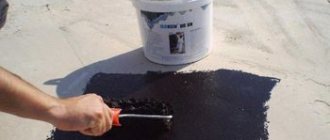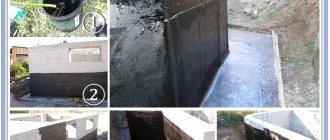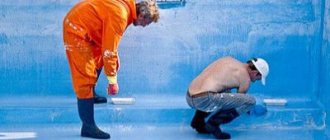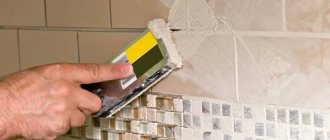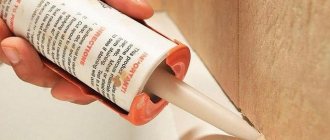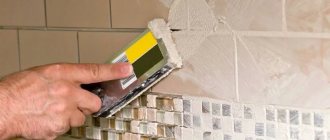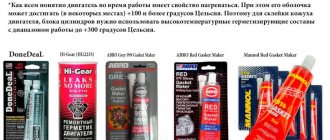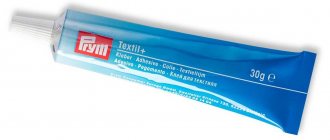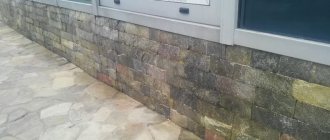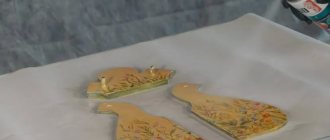What is bitumen mastic?
Understanding what bitumen mastic is is not very difficult. In simple terms, this is bitumen improved with the help of various additives. Due to these additives, the bitumen composition is resistant to cracks and is also thicker. Therefore, if the question arises of how to insulate the roof of a private house, do not forget to take into account the layer of bitumen mastic. If we talk about the appearance of this composition, it resembles a paste, deep black in color.
Despite the fact that this product appeared on the Russian market relatively recently, it quickly gained popularity. It is safe to say that at the moment bitumen mastic is one of the best-selling products in the field of building materials and roofing materials.
Advantages
Mastic waterproofing is the most popular method of protecting the roof base from the penetration of precipitation, a means for filling seams between rolled material and repairing cracks or gaps in old coverings. Its advantages are considered:
- Inexpensive price. The cost of hot bitumen mixture for waterproofing is 600-700 rubles per 20 liters. Cold mastic costs 2.5-3 times more, but it also costs less.
- Easy to apply. To organize mastic waterproofing, no special skills or special tools are required, so it is a do-it-yourself approach.
- Weather resistant. External environmental factors do not affect rubber bitumen, so it does not crack or crumble, maintaining its strength qualities for many years.
- Good adhesion. Mastic insulation can be applied to vertical and horizontal surfaces, to almost any type of material.
- High anti-corrosion and antiseptic properties. Liquid bitumen creates a film that prevents the surface of the material from coming into contact with oxygen, stopping corrosion. In addition, it is a strong natural antiseptic, therefore it blocks the spread of harmful microorganisms.
Please note that self-leveling mastic roofing can be painted during the production process or after application to obtain the desired roof color.
Characteristics of mastic
How to dilute bitumen mastic to a liquid state?
And now some useful tips for craftsmen on how to dilute bitumen mastic to a liquid state. As is known, according to its composition, bitumen mastic is divided into several types. Also, the material is also divided according to the method of application and technical characteristics.
Some types of mastic cannot be used in certain conditions, for example at very low temperatures. Also, if the mastic needs to be heated, then the temperature of the composition must be at least 160 degrees. Only after this can the products be used for work. If we talk about cold mixtures that can be used when installing PVC membrane roofing, the conditions of use will be different. The most important thing is not to heat it, use it in its original form.
Also, if you use cold mastic, it needs to be diluted. Concentrated material may thicken too much and play a cruel joke on you. But, the components for dilution depend on how the composition will be applied to a particular surface.
If you prefer to dilute any compositions with a solvent, then in the case of mastic we do not recommend doing this. Since the solvent tends to evaporate, therefore, when the mastic hardens, this is more likely to happen. By the way, when installing a membrane roof, the price of work per m2 is calculated together with the preparation of the consumables themselves.
Therefore, if you hire specialists to lay mastic, you don’t have to worry about what and how to dilute it. All this is done by masters. The best thinners are components such as:
- Kerosene;
- Petrol;
- Diesel fuel (diesel fuel).
All these substances have the property of “holding” their shape. That is, if the proportions are observed correctly, they will not curl up, evaporate, or change their technical qualities. In addition, they are easy to obtain on the market.
Precautionary measures
The work requires the master to comply with safety rules. A hot type of mastic paste should only be heated in a water bath; the product should not be placed on an open fire. Heat the solution in the same container in which it was sold. Other rules:
- During the work itself, open fire should also not be allowed;
- The temperature when applying the composition should not be lower than -5 degrees;
- Internal work requires the creation of good ventilation;
- Wear protective clothing, gloves and a respirator.
The temperature when applying the composition should not be below -5 degrees.
How to apply bitumen mastic?
There are a lot of options for applying bitumen mastic. It all depends on its consistency, concentration and conditions of use. It is clear that it will usually be very difficult to apply cold mastic with a painting brush. Due to the fact that the composition is cold, the brush will get stuck, hairs will stick and be torn out. As a result, the tool may completely freeze in a jar of mastic.
Also, the surface on which the composition is applied plays an important role. If you are fundamentally unfamiliar with the technology of installing membrane roofing, then we do not recommend working with it without preparation. You risk damaging the tool, the solution itself, and most importantly, damaging yourself. Especially if it gets very hot.
Let's return to surfaces. Firstly, based on its area, the type of work is determined. If the area is small, it is possible to apply mastic to the required places with human effort. If this is a full-fledged roof of a house or a facade, then it is better to use a mechanized method.
For the manual method, a short-haired roller or a fluted brush is suitable. It differs from a regular brush in that it is more resistant to the viscosity of bitumen. Thus, it better distributes the product over the surface without allowing streaks and unevenness. If mastic is applied mechanically, this is done with a special mechanical sprayer. Under its pressure, the product is distributed evenly and symmetrically.
Application technology
Application of MHBB and MHC – To cold:
- They begin work at temperatures ranging from – 20 to + 40°C, the surface for work is clean from dirt, dust, snow precipitation;
- The surface to be covered is dry (moisture content should not exceed 4%), if the moisture content is high, it is dried, heated with an infrared or gas burner, otherwise the material will exhibit insufficient adhesive properties, which will lead to swelling and peeling when drying;
- The thickness of the applied layer to ensure waterproofing is 2-4 mm, the number of layers is at least 2;
- When applying, the contents of the bucket are thoroughly mixed until a homogeneous mass is obtained;
- The first layer of diluted mastic is applied to the surface to be treated with a brush, the proportions for mixing the primer are 1:2, where 1 part of the mastic is diluted with 2 parts of white spirit, or use a ready-made bitumen primer;
- After the primer has dried, MGBB or MGH-K is applied with a roller or spatula; to seal cracks, seams, and joints, it is preferable to use a gun (“syringe”);
Applying BCM to the foundation with a spatula
- At above-zero temperatures, it is recommended to apply each subsequent layer after 6 hours (if it is completely dry);
- For greater strength, a reinforcing mesh is installed in the interlayer space.
You can speed up the process of applying mastic for waterproofing, make it safer and save on material consumption by using a mechanical sprayer designed specifically for working with viscous liquids. You can learn about the application features and properties of BKM in the video.
https://www.youtube.com/watch?v=j3q4LxJGpNI
What is the difference between primer and bitumen mastic?
To understand the difference between primer and mastic, it is enough to know the definitions of both terms. By the way, this will help you reduce the cost of installing a PVC membrane on the roof, since you will know the basic qualities of the material. So, we have already figured out what bitumen mastic means.
In turn, bitumen primer is, in principle, a product similar in composition. Only it is produced on the basis of bitumen, and contains various solvents of organic origin. Also, the components of the bitumen primer are minerals and polyminerals.
The primer should only be applied to a previously cleaned and degreased surface. Due to its more liquid and watery structure, the primer is able to penetrate deeper, thereby filling all voids and internal cracks/chips. This is very important when treating membrane soft roofing with similar materials.
How to wash bitumen mastic?
If you are faced with a situation where you need to wash bitumen mastic, the first thing it could be is a solvent. But let us immediately note that this works if the composition is still hot or warm. When the mastic has already hardened, especially concentrated, and some time has passed, then simply erasing it chemically will be very difficult and energy-consuming.
You need to understand that the mastic contains petroleum products. This gives it additional resistance to laundering. Therefore, when choosing a product, it is necessary to consider what type of surface it will need to be cleaned from. In addition, the volume of excess plays a big role in the choice of cleaning method and product.
As we have already said, bitumen contains an impressive percentage of petroleum products. This allows the mastic to be used in almost all types of construction work, including when laying and installing PVC roofing on the roof.
Mastic is, to put it mildly, a sticky material. Once cooled, it literally solders to the surface. Therefore, if even a small amount of bitumen gets on clothes or other things, you can’t just wipe it off. Mastic can only be removed by heating it to at least 50 degrees.
The biggest mistake most people make is to immediately aggressively tear off the mastic and try to scrape it off. This will completely damage the material to the point that it cannot be restored. If the bitumen layer is too thick, then it makes sense to heat it and cut off a little thickness. But this is the maximum that will have to be done.
What is bitumen mastic used for?
It makes no sense to talk a lot about what bitumen mastic is needed for. Indeed, due to its properties, which are tightness and at the same time elasticity, the composition is actively used in construction for most repair work. Mastic has no less significant use in laying roofing materials.
And, of course, bitumen, as the primary material, is used in laying asphalt. Thus, hot asphalt chips are hermetically fixed to the road surface, supporting the weight of even particularly heavy cars and heavy trucks. Yes, the composition of road bitumen differs from the mastic used for waterproofing roofs, foundations, swimming pools or ponds. But the basis of the composition and its technical characteristics are similar.
Manufacturers and estimated prices
The largest domestic companies producing a wide range of bitumen mastics for various purposes are TechnoNIKOL, Grida, RusMonolit and MPK KRZ. They produce products of stable and predictable quality, which fully comply with GOST requirements.
The average price of a standard 19-kilogram bucket of bitumen-rubber and bitumen-rubber mastics, depending on the manufacturer and region of sale, ranges from 1,600 to 2,000 rubles.
Bitumen-latex mastic is significantly cheaper and its price ranges from 1000 to 1200 rubles per bucket (19 kg).
For a bucket of hot-use bitumen-oil mastic, sellers ask from 700 to 900 rubles.
Bitumen mastic or primer: which is better?
If you are choosing between bitumen mastic and primer and don’t know which is better, be sure to read this part of the article. By the way, if you decide to install a soft roof with your own hands according to the instructions, this issue will definitely be on the agenda. It would seem that they are two similar products, but which is better?
Let us say right away that for each case a different composition is selected. It all depends, as a rule, on the surface on which the primer or mastic will be applied, the conditions of application and the type of work. In general, the most important difference between one product and another lies in the scope of their application.
Bitumen mastic is used for waterproofing work on roofs, facades, foundations or water tanks, etc. The primer, in turn, is used for road work, including when laying crushed stone and asphalt chips, and carrying out communications, namely gas or water.
Of course, when eliminating corrosion and other mechanical damage to the pipeline, the primer has no place. If the list of repair work includes priming the surface, the primer will become an indispensable component for this activity. Having found out what dismantling of structures is, you will learn what role both mastic and primer play in this work. And also whether they are needed there in principle or not.
Bitumen mastic does not dry: what to do?
If bitumen mastic does not dry, this can become a serious obstacle to work. So what to do and how to deal with it, so to speak. When an estimate is drawn up for repairing the soft roof of an apartment building, this point is not taken into account by contractors. However, even an experienced worker can face this difficulty.
Such cases arise, as a rule, due to the lack of time available for the bitumen to dry. Many workers, due to inexperience or other reasons, assume that the drying process itself does not take much time. But, fortunately, there are quite simple, but at the same time, productive methods to speed up the drying process of the composition.
The most common method is used at the stage of applying mastic to the surface. Instead of rollers/brushes and other means, it is better to apply the mastic with a spatula. Due to the formation of so-called grooves, the solvent contained in the composition will evaporate faster, which means the bitumen itself will dry faster.
After applying mastic to a certain area, it is very important to ensure that it is isolated from direct moisture, even in small quantities. Also, it is better to provide constant air access to the treated area in order to create circulation. You should not cover the areas with polyethylene or stretch film, as such manipulations will block the access of air, which will negatively affect the drying of the composition.
If the work is carried out in an open space, it would not be a bad idea to install devices for artificial drying, for example, heaters, heat guns, fans. As for the drying speed of mastic on roofs, it all depends on the type of soft roof for the garage and its area.
Polymer-bitumen mastic: what is it used for?
And the last thing we have to deal with in this article is why and where polymer-bitumen mastic is used. In general, this material is primarily used for waterproofing and vapor barrier of facades and roofs. And also, the interfloor ceiling is treated to protect it from mechanical damage and the effects of climatic conditions.
Within our country this is most important. Since in some cities high humidity prevails in symbiosis with hot weather. While in more northern latitudes there are stable frosts and cold precipitation most of the year.
Thus, bitumen mastic is a high-quality and widely used material. Despite its relatively recent introduction to the Russian market, the composition of waterproofing bitumen has rapidly gained popularity and deservedly positive reviews from users.
Bitumen-butyl rubber (MBRB)
The scope of application is not limited to the roof and foundation; it is also possible to seal seams, narrow cracks and joints. Can be applied using both hot and cold methods. The main component is butyl rubber mixed with volcanic additives and filler.
Advantages:
- high frost resistance, as well as ozone and oxygen resistance;
- gas, light and vapor tightness;
- Mastic applied using the hot method dries quickly (on average 20 hours) and does not shrink after the hardening stage.
